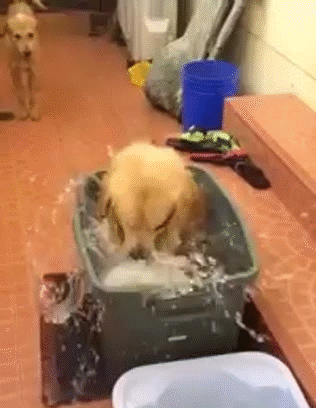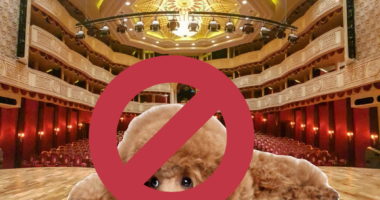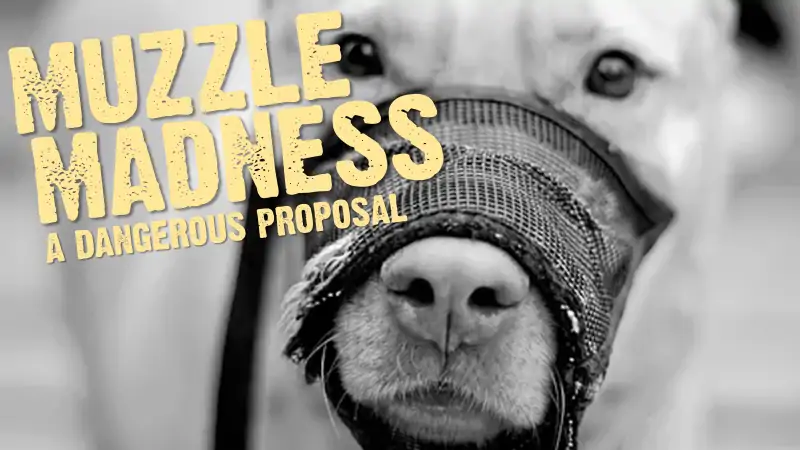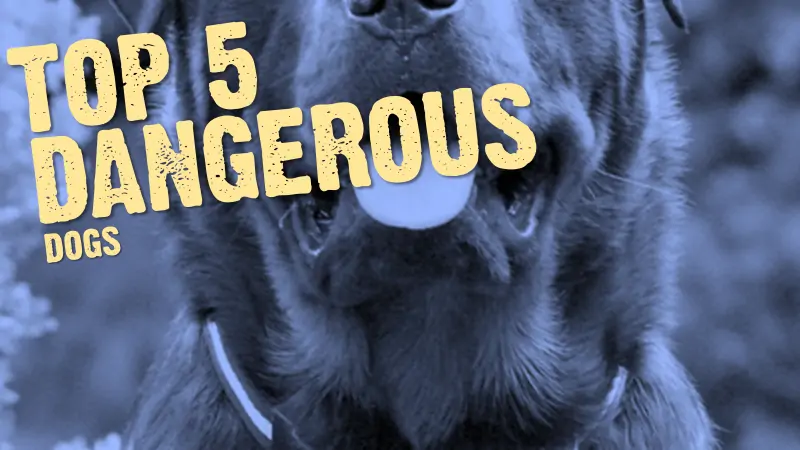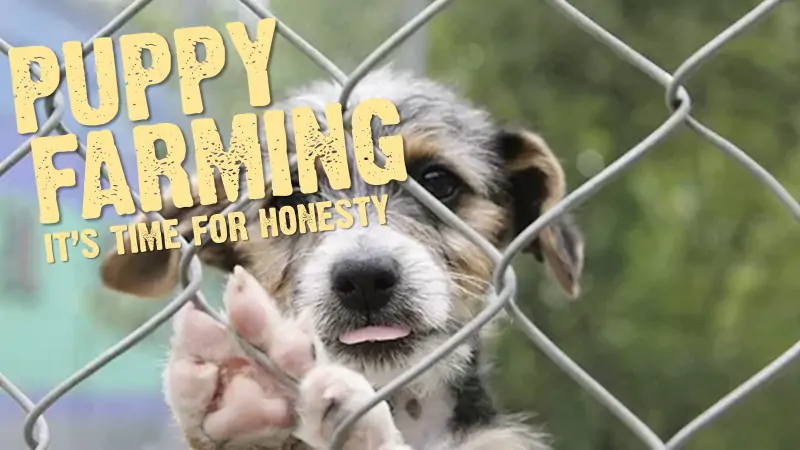Over the past few years The Kennel Club, in their infinite wisdom, have busily been calling for the saviour of some ‘endangered’ or ‘vulnerable’ British pedigree dogs. So concerned are they about the plight of some breeds a prominent article in The Independent informed us that the blame is firmly being placed at the feet of ‘Johnny Foreigner’. Yes, it’s all the fault of foreign imported breeds and we should all make a more concerted effort to “buy British”.

Are Otterhounds to go the way of the Dodo?
To the average pet loving reader, already pre-occupied with the plight of the disappearing Polar Bears, Black Rhino and Red Wolves, such an alarming piece of news could set off a panic. However, if we wade through the hyperbole, what shines through an otherwise unenlightening article like a beacon is that this whole story is – perhaps – nothing more than irresponsible spin, encouraging the production of more dogs which are clearly proving to be less than popular with the pet owning public at large. Let us examine.
“There is a pedigree breed for everyone” Said Bill Lambert of the Kennel Club in the article. Conveniently ignoring the whole concept of cross and mixed breed dogs. The agenda on the table here is that the Kennel Club are concerned about the numbers of dogs that are being bred being too low. Whilst every other animal welfare organisation in the country, possibly the world, is pushing for breeders and owners to limit the litters they produce, the Kennel Club is using the national media to encourage people to populate the country with puppies, the breeds of which are already proving to be unpopular.
A case in point is the Otterhound. The Otterhound was extremely useful in the seventeenth century, with its webbed paws, it would sweep majestically through water to hunt otters. Nowadays, we don’t hunt otter, so the breed has become less popular.
Vet Emma Milne, star of the hit TV show Vets in Practice and an outspoken animal welfare campaigner is not fooled by the Kennel Club spin:
“In my opinion the KC should be spending a lot more time and energy trying to improve the health of these breeds rather than merely trying to get numbers through the door. The Otterhound is a classic example. I’m sure when the breed originated it was highly athletic and well-adapted for purpose. As with so many breeds that are no longer needed for a purpose, looks have become more important for selection than health. The Otterhound has the worst hip record of any dog breed scored. Until the KC starts making health testing compulsory and takes a decent stance on pro-active dog health and welfare their wish for more puppies is, quite frankly, offensive.”
But the Kennel Club thinks it would be a good idea to breed more of these dogs and uses a page straight out of the BNP handbook for getting attention. The old “Foreign imports are to blame for eroding something traditional and British”, trick.
The Otterhound is a nice dog, friendly and intelligent with boundless energy and bred for a very specific purpose. But natural dog ownership trends have proved that the breed is not suitable for that many people today. Yet we are expected to agree with the Kennel Club that the right thing to do would be to stimulate an artificial demand for the breed on the grounds that it may become ‘extinct’ if we don’t? What rubbish.
Ever since the domestication of the dog, different breeds have been popular, with spikes and dips in popularity dictated by taste and necessity. Using the language of fear as it applies to entire species and sub-species of wild animals, words such as ‘extinct’ and ‘endangered’ is misguided at best, downright scaremongering at worst.
The aim, clearly, is to grow the numbers of these breeds. But how and why is it the job of anybody but society at large to dictate demand for the type of domestic pets we choose to own? When Disney puts out a film about Dalmatians we see a spike in trend. We see more Dalmatians in rescue centres the year after. Why? Because the sort of Dalmatian breeder/supplier who is prepared to let someone have a cute black and white spotty puppy on the basis that they felt compelled to own one after prompting from the big screen imagery, or the newspapers or magazines or the media in general, is, let’s be honest, not in any way, shape of form a responsible person to be selling dogs. They are capitalising on an trend created artificially by a larger movement.
Caroline Kisko, Kennel Club secretary, said: “Everybody is talking about the post-Olympic baby boom, but perhaps the celebration of our British heritage has helped lead to a revival of some of our native breeds.
“Fashion and profile have the most influential impact on dog choice and we are pleased to see there is still a place in people’s hearts and homes for our British vulnerable breeds.”
Fashionable Dogs: A Very Bad Idea
Artificially creating a demand by playing to the human’s sense of idealistic emotion is not, has not, nor ever will be a responsible message to hit the general public over the head with. Demand can only be met if the supply is there. So let us assume the Kennel Club’s message does hit home and there is a sudden demand for more Otterhounds. Who meets that demand? Do established Otterhound breeders all of a sudden click back into action, dust off the old whelping boxes and get set for the endless stream of well prepared, wel researched army of followers suddenly attracted to their breed? Unlikely. The established, responsible Otterhound breeders are not currently flooding rescue centres with the product of their unwanted offspring. They tend to be supplying dogs to people who have discovered the Otterhound ‘naturally’. And you know who’d be first in the line to capitalise on the increased demand for Otterhound puppies should an artificial interest in the breed be stimulated via the media don’t you? You guess correct reader. It would be the self same breeders/suppliers who cashed in on the Dalmatian’s popularity when Disney pulled the same trick. Or the St Bernard when Beethoven was doing the rounds on the silver screen. We tend to call those people commercial dog dealers. Interested more in cashing in on ‘trends’ for dogs than actually improving or developing a breed.
To encourage more people to own these breeds so that they can justify the act of breeding the dogs in the first place. They are playing on people’s fears by saying the breeds are being driven to extinction by foreign imports.
Emma Milne agrees: “The KC and many lovers of rare breeds of all species use this fear often. Breeds are a totally man-made concept created by in-breeding. Using the word ‘extinct’ conjures up images of the dog species becoming extinct. In fact, on welfare and health grounds it can be argued that some breeds should become extinct because of their appalling conformation and inherited disease.”
With thousands of dogs, pedigree and otherwise, in rescue centres right at this very second, it’s saddening that the organisation that claims to exist for the benefit of dogs, is keen to influence trends. There is no getting away from the fact that by encouraging the demand for breeds who are proven to be less popular already, that demand would have to be met by an increase in supply. Who, after all, is or indeed should be influenced in their dog of choice by a message put out by the media? Don’t we usually condemn that sort of thing?
Over one hundred thousand dogs in rescue centres all over the United Kingdom and the Kennel Club is aiming to stimulate a growth in breeds that have proven themselves to be less and less popular in the first place?
The way in which this ‘message’ this ‘call to arms’ is being put across is most unsavoury.
By saying that people should choose dogs that suit their situation, they are contradicting themselves in the same breath by pushing people toward these ‘rare’ breeds. If the demand does not exist for these breeds naturally, maybe there is a reason?
The ‘resurrection’ of the popularity of the British Bulldog was recently hailed a great success by the American version of the Kennel Club. A once fine dog breed, now reduced to a shadow of its former self in terms of health, functionality and purpose. Yet there are celebrations abound that this one great dog breed is now back in the popularity polls.
According to AKC breed registrations, Bulldogs shot up 62 percent in popularity over the past ten years, and increased five percent over the last year. Why? How? You might ask. Is it because they’re all of a sudden much healthier, living longer, or they have escaped from the debilitating conditions they’ve been afflicted with since they started to hit the tip of a genetic bottleneck? Well, no. Because the French Bulldog is also on the rise. And according to AKC spokesperson Lisa Peterson, that can be put down to:
“There must be a thing for that pushed in face – it is cute, and they’re wonderfully fun. Frenchies certainly have a sense of humour,”.
Don’t worry. You DID read that correctly. It’s all about ‘the pushed in face and the sense of humour’. Funny eh?
Emma Milne perhaps doesn’t see it quite such a humorous light:
“Bulldogs are a major cause of concern as far as health goes and can suffer from skin, eye, and skeletal disease to name a few, not to mention the fact that the breed is virtually incapable of giving birth any more. Without veterinary intervention both at the time of birth and throughout life for various deformities this breed would die out within a generation or two”.
In the Independent’s article, a graphic illustrates some of the breeds on the ‘endangered list’. Many will be surprised to see the Greyhound in at number 48. I say surprised because if looking around UK dog shelters has taught me anything, it’s that there is no shortage of Greyhounds looking for new homes. Not quite the same though. You need to be aware of that. The Greyhounds the KC are talking about are ‘different’ to the ones stacked up to the rafters in dog adoption shelters throughout the country.
If nothing else, surely the fact the Greyhound is on the ‘endangered’ list makes a mockery of the whole thing.
Please, do not be in anyway put off by considering any of the breeds appearing on the ‘rare’ list. Make your dog ownership decisions according to your lifestyle, conscience and the fruits of your research. There ARE some fantastic dogs on that list. But please, we urge you, don’t be fooled into owning a ‘rare’ breed because the Kennel Club tells you that if you don’t, you are, by-proxy, contributing to their demise and eventually ‘extinction’ a dog breed cannot become extinct. We (man) created them ourselves in the first place. Saying a dog breed can become extinct is like saying Nylon could become a extinct or Ipods could become extinct or the world’s supply of Bic razors could disappear – we, dog owners, decide on the dogs that are popular and we do it for a whole range of different reasons. We cannot make dog breeds become extinct unless we make the species extinct. And it doesn’t look like that’s something we’ve got planned for the immediate future.
Enter your email and never miss out on receiving our best articles:

